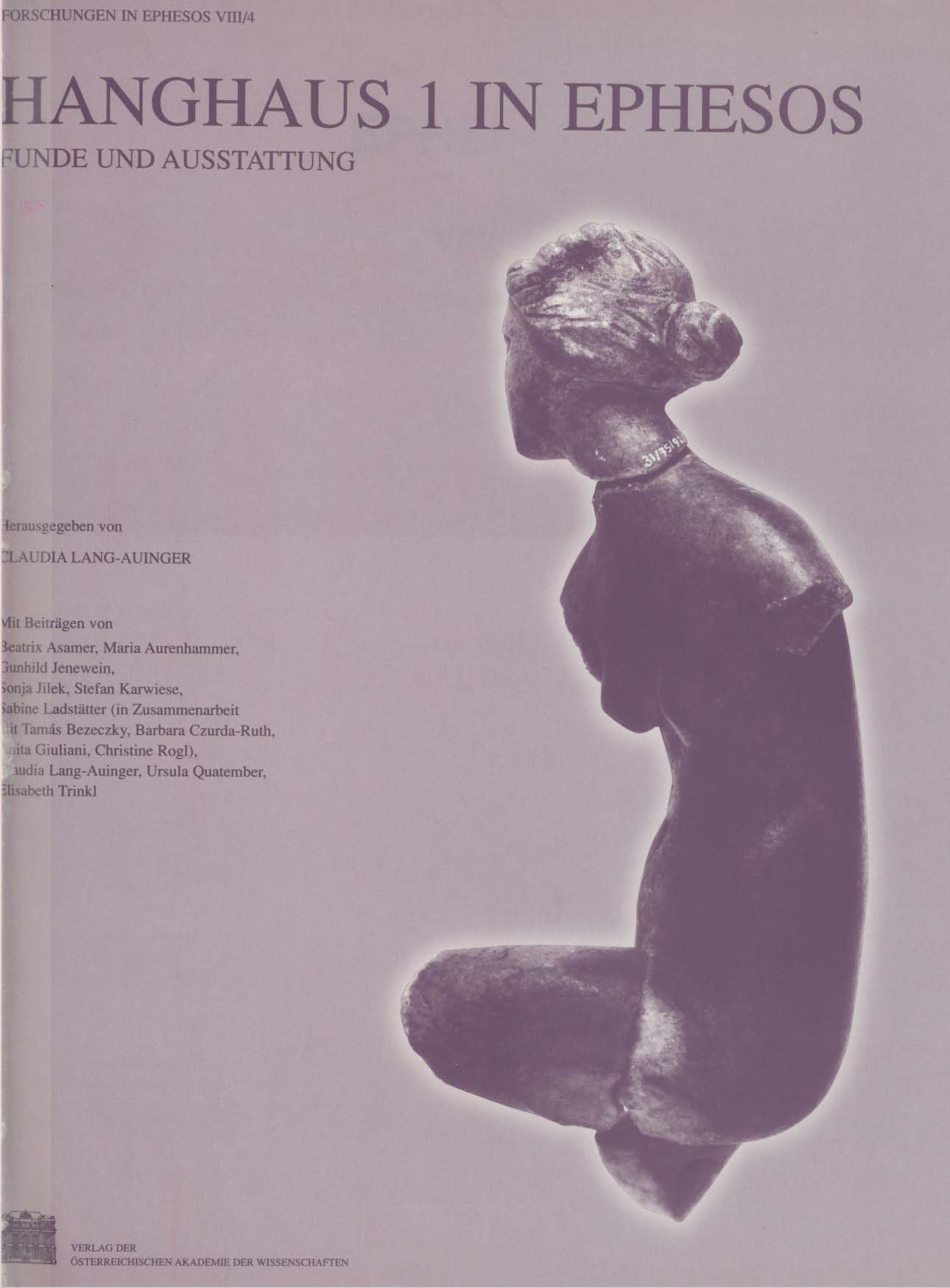
Der vorliegende Band schließt an den FiE-Band VIII/3 "Das Hanghaus 1 in Ephesos. Der Baubefund" an; er enthält die Vorlage und Interpretation der Funde aus dem Hanghaus 1 in Ephesos. Die Untersuchung des Fundmaterials im Kontext der Baugeschichte führte zu wichtigen Erkenntnissen zur Geschichte des ephesischen Wohnbaus: das Einsetzen der Besiedlung im Bereich des Hanghauses 1 um 200 v. Chr. kann nun belegt werden. Berücksichtigt sind alle Fundgruppen: Keramik, Architektur, Skulptur, Terrakotten, Marmorinventare, Kleinfunde, Münzen. Die Kataloge sind nach den Fundorten aufgebaut. Diese Vorgehensweise eröffnet einen unmittelbaren Einblick in die Ausstattung der einzelnen Räumlichkeiten im Hanghaus. Die Gegenüberstellung der Raumlagen innerhalb des Hauses ergibt nun ein stimmiges Bild, das sich aus Grundausstattung mit Böden und Wänden (FiE VIII/3) und den beweglichen Ausstattungsstücken zusammensetzt. Wirtschaftsräume sind eindeutig von Aufenthaltsräumen geselliger Art zu unterscheiden - jedoch nicht genauer zu deuten. Dort, wo der Baubefund nur noch geringfügig vorhanden war, herrschte auch eine gewisse Fundleere, sodass sich diese Räume weiterhin jeder Interpretation entziehen. In dem Wohnblock im Zentrum der Stadt lässt sich erst für die Spätantike auch eine gewerbliche Nutzung der Räume nachweisen.
…
This volume and its preceding volume VIII/3, dealing with the buildings construction, complete the documentation and interpretation of Hanghaus 1. The finds were investigated within the context of the buildings history. Thus we obtained important results for the history of private housing in Ephesos, confirming that the earliest housing construction in this area of the city took place about 200 B.C. All categories of finds were taken into consideration according to the room in which they were discovered and catalogued. This gives us an immediate impression of how the house and its rooms were furnished. A comparison of the building plan, the floors and walls of each room, and the movable items found within it yields a clear picture. We can differentiate well between living space and storage rooms, yet are unable to interpret them more closely. In areas where little of the building is extant, there were also relatively few artefacts to be found, and interpretation is not possible. There is no proof of commercial use of this building in the centre of the city before late antiquity.
2003
978-3-7001-3205-9
375 + 165 Tafeln mit Farb- und SW-Abb. + 4 Pläne,
39x31cm, Forschungen in Ephesos VIII/4, broschiert